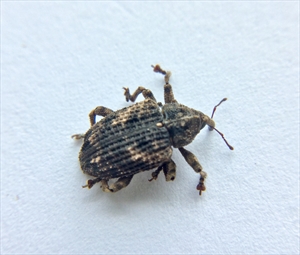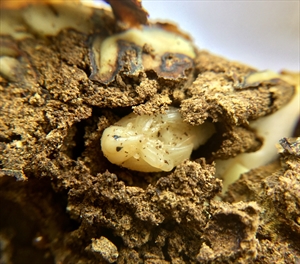- Widespread distribution: In Oceania, Australia, Fiji, French Polynesia, Guam, New Caledonia, Northern Mariana Islands, Tonga, and Wallis and Futuna. A brown, black or grey seed weevil.
- Eggs laid into slits on fruit, larvae burrow into flesh to find the seed, and later pupate. Fruits fall and after 2 months adults emerge.
- Spread occurs inside infested fruit. Survival in leaf litter and under bark or in seed.
- A damaging 'cosmetic' pest: (i) dark (egg-laying) marks on fruit, i(i) larvae/pupae and frass in seed.
- Natural enemies: weaver ant, Oecophylla smaragdina.
- Biosecurity: if weevil not present, use 'area freedom' - See FAO International Standards for Phytosanitary Measures.
- Cultural control: if weevil present, collect fallen fruit/seeds and destroy; ban fruit entering plantations; remove non-commercial trees or spray with insecticides.
- Chemical control: when egg-laying sites seen, spray canopy once or twice (October/November), and when adults emerge (February/March). In Australia, chlorpyrifos and methidathion are used.








